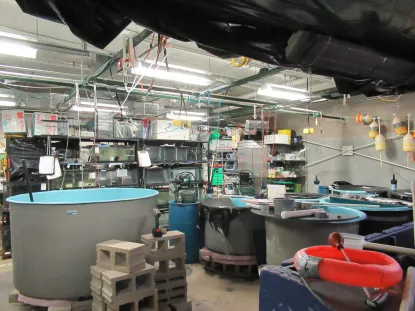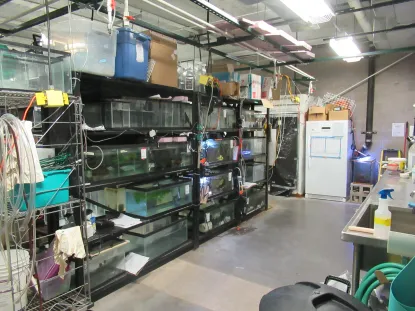
Aquatics Laboratory
The 2045 square foot Aquatics Laboratory is designed to culture aquatic animal species including both vertebrates and invertebrates. Typically, fish dominate the facility, but other species including crayfish and salamanders have been housed in the lab. The lab is equipped with computer-controlled lighting, emergency and regular electrical power, hot and cool temperature control, and floor drainage. It includes a bay door for easy loading access. The facility is operated under the supervision of a facility manager (Dr. Jill Leonard) and cared for on a daily basis by a crew of undergraduate caretakers.

Facilitating student research
The Aquatics Lab is primarily used for undergraduate and graduate research projects and hands-on projects associated with laboratory courses, notably BI 441 Fisheries Management and BI 443 Aquaculture.
Designed to maximize flexibility for a variety of research needs, the systems in the lab vary as new projects come online. Typically a capacity of about 2,500 gallons of tank space are operational at any given time. Available systems include an artificial stream (808 gal), 6 to 8 round fiberglass tanks (100-300 gal), and a number of 10 and 20 gal small glass aquaria.
Species commonly held in the facility include brook trout (Salvelinus fontinalis), burbot (Lota lota), mummichog (Fundulus heteroclitus), Gulf killifish (Fundulus grandis), guppy (Poecilia reticulata), red-backed salamanders (Plethodon cinereus), Louisiana crayfish (Procambarus clarkia), three-spined stickleback (Gasterosteus aculeatus), brook stickleback (Culaea inconstans) and various aquarium species used for diversity displays. Other species come and go with shorter term student projects.
